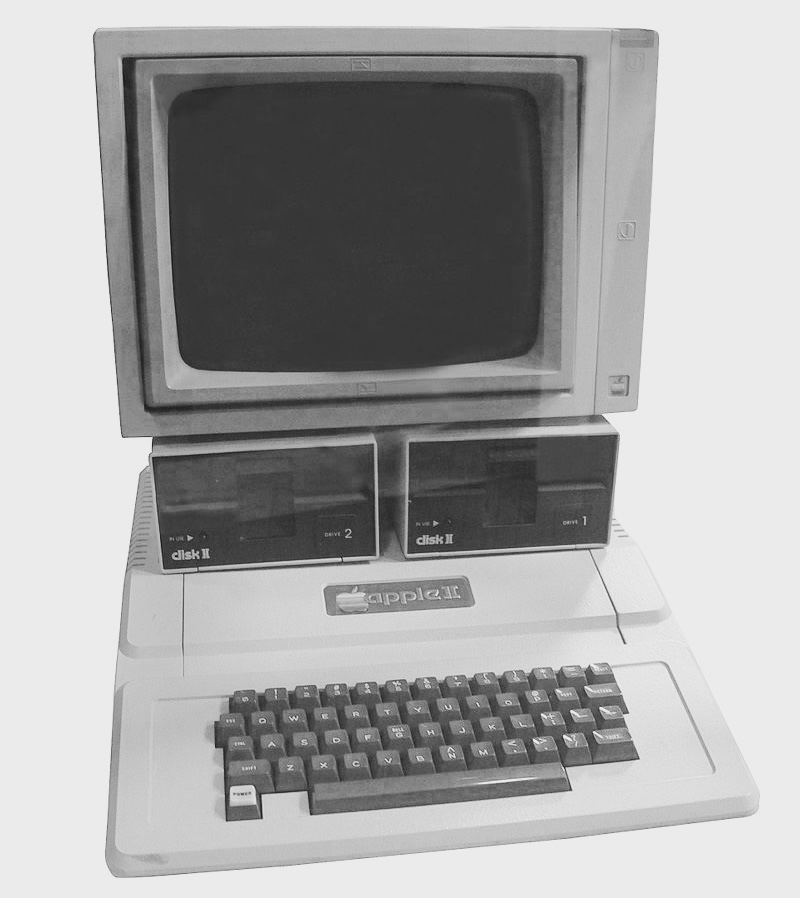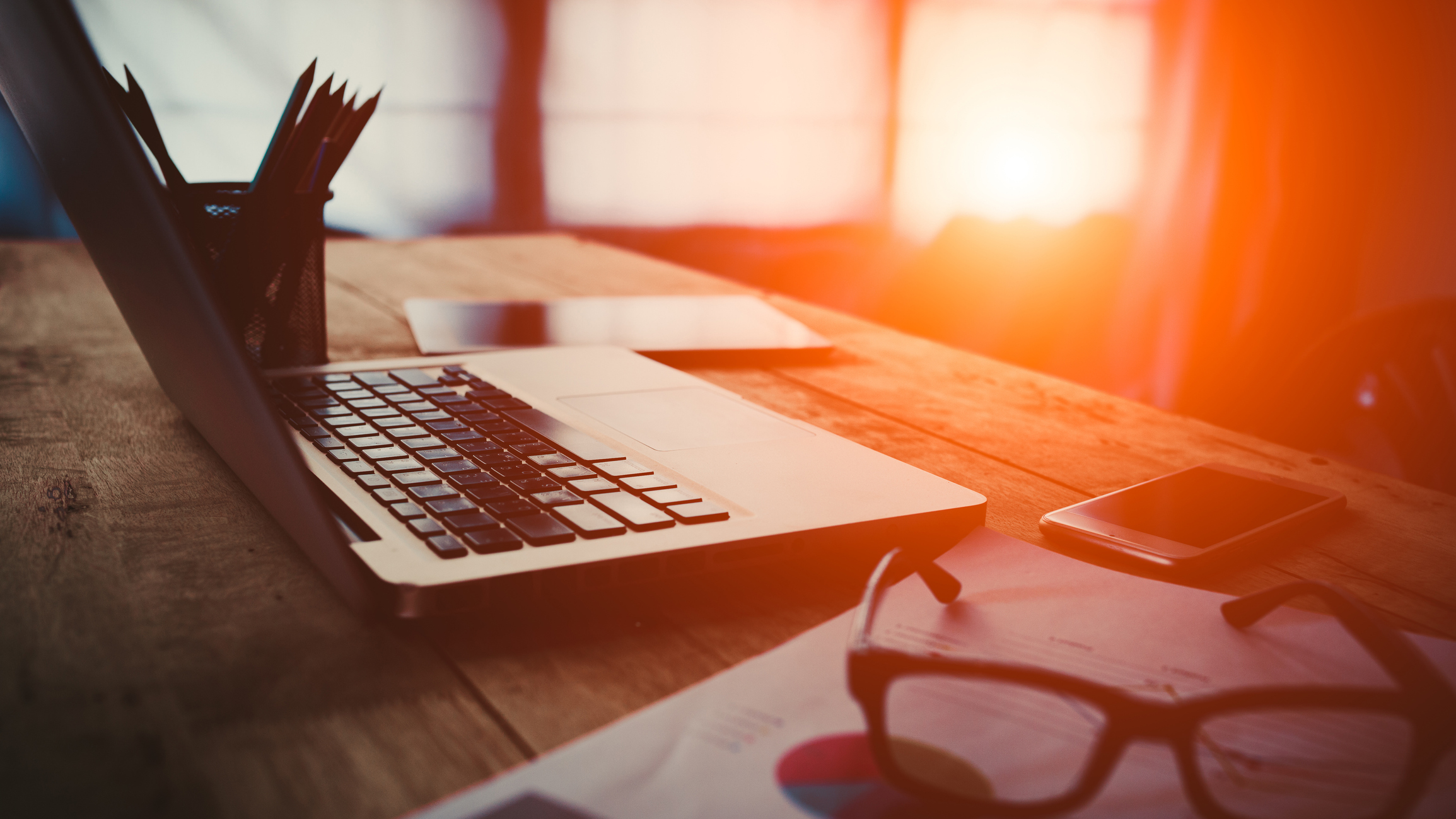
These days, our changing relationship with technology often focuses on an addiction to one or more smart devices, which notify us continually of some seemingly important message. My own evolving relationship with technology spans more than a half century.
In the old days of technology, which was really only about fifty years ago, a computer was as big as a grocery store, and if you weren’t the U.S. government, especially the military branch, you had to program it yourself. That was my experience in 1968 when I was doing research for my doctoral dissertation and decided to use the computer to run my statistical analyses to help make sense of my results — at least well enough to convince my committee to grant me a degree. In those days, you had to program your own key-punch cards — hundreds of them — and make an appointment to feed them into the computer, usually in the dead of night when most sane people slept. And, of course, I first had to learn to operate a key-punch machine. Well, you do what you have to do, and after many such late night forays to the never sleeping computer, the job got done.
I haven’t even mentioned anything about the months I spent in the back rooms of libraries reading dusty journals and microfiche (be thankful if you are too young to know what these are). Today, any third-grader knows how to do research in an instant on any device with Google. Given that comparison of months versus minutes, it’s fair to say that technology has simplified life — or has it?
In the mid-1980s, I wrote my first book. Feeling very progressive, I used my Apple II, the first personal computer available, and one that I borrowed from my techie husband. Definitely not a smart device, it served as a typewriter with the benefit of easy erasing. Even moving words to rearrange my thoughts required learning lots of commands. The large desk-top box sitting in front of a keyboard had a colored strip taped above it to remind me of the complicated ways to achieve what today would be considered no-brainer functions like “backspace” or “cut and paste.” But I persevered, and I wrote, edited, and formatted a 250-page book. It felt like quite an accomplishment — and it was. Fast forward to 2017 when I finished my fourth book, composed on my MacBook Air, with the benefit of a free-standing large screen monitor. This is not even the most current device, but I love its portability. And any device that fits into my cross-body messenger bag is worth cherishing — the tool of a writer’s trade!
I also have a long history with the portable telephone! In the mid-1980s, I commuted 100 miles each way, and since I drove an older car that was showing signs of its age on the road, my husband thought that a portable phone would be a good idea in the event of an emergency. The first ones were almost as big as shoe boxes, and had antennas that when fully extended looked more like flag poles. Without this extended appendage, the phone was a useless static machine. I kept this monstrosity in my car for the rare moment when I would need to signal for help. Calls to chat were unthinkable, and exorbitantly expensive. On the uncommon occasion when I would carry the device around at my workplace, it didn’t fit into my briefcase — and that was my roomiest repository.
Fast forward to my smart phone, which is the latest and greatest version of what my hometown in Silicon Valley has to offer. No one uses it for phone calls anymore. That’s so passé! Still, as with my first portable phone, it can be used to call for help in an emergency.
I remember the first phone in my family’s apartment in New York City. It was an oddly shaped black box with a circular dial and something called a receiver, which you lifted from the phone’s cradle to hear a dial tone. The heavy receiver fit between your ear and mouth, and allowed you to both speak and listen. Of course, a household had just one of these devices in a centrally located spot, which meant that it was convenient to no one. In those days, you used the phone for the same reasons that I used my first portable phone — emergencies. Casual use was just too expensive, and any user could forget about privacy.
The attached cord enabled you to drag the phone about 10 feet — not quite long enough to ensure that your family wasn’t privy to every word. And in those days, the 1950s, you were lucky if you didn’t have a party line. A quick explanation is in order so that you don’t have to ask your grandparents or Google it: Often there weren’t enough phone lines available in a community, so you might share your line with someone else, a complete stranger. You also had to wait until they were finished with their call. Of course, you could rush and annoy them by clicking on and off the line — or stay on it if the conversation was interesting. It was a fascinating pastime before TV had much to offer.
As for now? My 4-year-old grandson can do virtually all of the things that fifty years of technology has taught me. Of course, he won’t know how to do library research the old way, and he may even not know how to make change for a $1.00 bill. I’ve noticed that very same problem when the computerized cash register isn’t working in a shop, and the young adult waiting on me can’t figure out how to give me change. And my grandson’s nighttime ritual of watching a video before going to bed has been added to storytelling and reading. I’ll worry when it displaces the latter two.
My relationship with technology is evolving. Today, I have every conceivable device and gadget, but I use them as tools that are not critical to my daily functioning. I might even be considered a sophisticated user, because despite my age, I can build a website, run spreadsheets, and upload articles like this one to my editor, including photos (that I snap with my iPhone). But I still like shopping in stores — looking at and feeling the texture of things. I still enjoy walking across a street without gazing down at my smart device to see who is eating what, where, and with whom. I can leave my house without my smartwatch, which is really a miniature computer, and unlike my other watches because it will need upgrading soon. Still, I must admit to pangs of anxiety when I forget to put it on.
My evolving relationship with technology is complicated. I like to think that as I continue to age, playing with the latest and greatest tech tools keeps my mind active and my cognitive functioning sharp. But if the electronic grid ever fails I’ll be one of the few folks around going about my daily business in the old way — a bit inconvenienced, but unfazed and without the need for a digital detox.
Follow us here and subscribe here for all the latest news on how you can keep Thriving.
Stay up to date or catch-up on all our podcasts with Arianna Huffington here.


